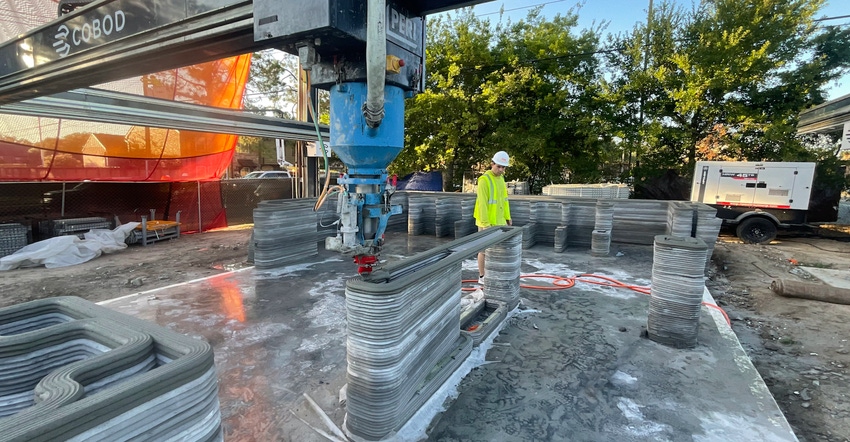Multistory 3D-Printed Concrete Homes Make U.S. Debut
3D-printed home construction had been limited to one-story dwellings, because widely available 3D printers were not capable of printing taller structures. However, a new collaboration of companies hopes to change that.

Manufacturers of 3D printers have long said that 3D-printed concrete construction technology is lifting construction possibilities to the next level, but now it can be said literally. 3D-printed home construction had been limited to one-story dwellings because widely available 3D printers in the U.S. were not capable of printing taller structures. However, a new collaboration of companies hopes to change that and revolutionize the way 3D printing is implemented in home construction.
About the project
The collaboration, which will create the first 3D-printed multistory family home in the U.S., involves architectural designers from Cornell University and HANNAH, a design-research company; PERI 3D Construction; and CIVE, a design-build firm.
The home is being printed in Houston, Texas, and is the result of a collective effort between design researchers that lasted for over two years.
Project representatives said a hybrid approach that involves wood framing was developed for the construction of the home, which will be a two-story structure with a modern architectural appearance.
The principals of HANNAH said the project “highlights the exciting design potential of mass-customized architectural components to meet homeowners’ needs and to simplify building-system integration.”
The collaboration used COBOD BOD2 printers on the project. Fabian Meyer-Brötz, CEO of PERI 3D Construction, said the Texas home is the company’s largest 3D-printed construction project to date.
Why it matters
“We are convinced that it will set new standards from a design, as well as a printing execution, perspective, and underlines our role as the frontrunner for this new construction technique,” said Meyer-Brötz.
Other companies like Black Buffalo 3D, which offers its NEXCON printers, are also vying for position in the industry as 3D-printed construction becomes more viable.
Philip Lund-Nielsen, a co-founder of COBOD International, explained some of the reasons behind 3D-printed construction’s rise in the past few years.
“The fact that you’re only 3D printing what you need means you reduce the waste on-site,” he said.”
As an example, Lund-Nielsen said electricians and plumbers will often have to carve out holes in concrete during conventional construction, which causes waste.
Additionally, 3D printing can be completed at a quicker pace than other construction methods, with projects now being completed in a matter of days.
“With 3D printing you simply print what you need,” Lund-Nielsen added. “And we can also design it in ways that you don’t need the walls to be load bearing all around. You can just have centered columns.
Read more about:
sustainabilityAbout the Author(s)
You May Also Like




